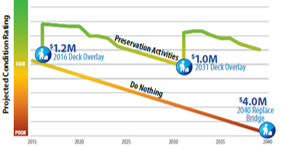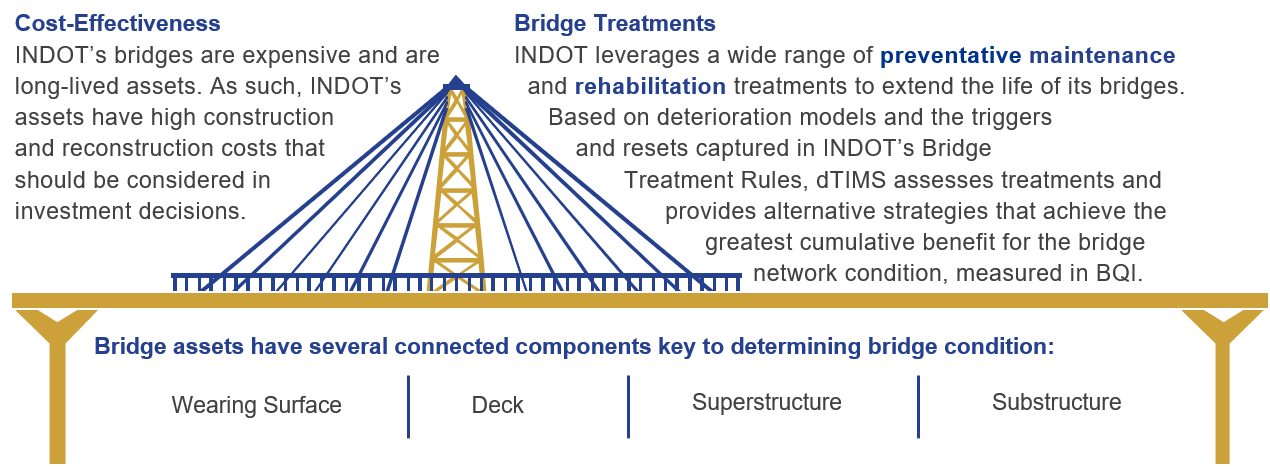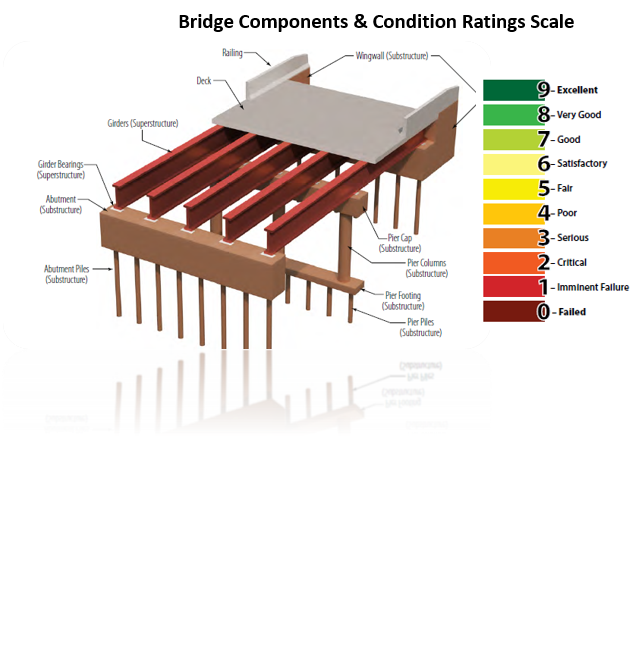 INDOT assesses whether bridges are in good, fair, or poor condition, following Federal Highway Administration guidelines. Condition ratings are ranked on a 0 to 9 scale, where a lower score indicates a greater level of deterioration. A bridge that has any one of the components with a rating of 4 or below is considered structurally deficient.
INDOT assesses whether bridges are in good, fair, or poor condition, following Federal Highway Administration guidelines. Condition ratings are ranked on a 0 to 9 scale, where a lower score indicates a greater level of deterioration. A bridge that has any one of the components with a rating of 4 or below is considered structurally deficient.
INDOT uses infrastructure management system software for lifecycle cost analyses, using condition and inventory data from our bridge database. The software models deterioration based on the wearing surface, deck, superstructure, substructure, bridge function, and bridge strength (load rating).
The software forecasts asset deterioration, identifies potential performance gaps, and visualizes the impacts of treatment strategies. The software then considers all recommended treatment strategies and identifies a benefit-cost effective treatment strategy across the transportation network, given programmed funding constraints. We then evaluate the recommended projects using a scoring methodology to prioritize projects for funding in the capital program.

Separate scoring systems are used to prioritize projects based on whether the project is a bridge rehabilitation, reconstruction, or replacement project; large culvert and structure project; project addresses a unique deficiency; or is an exception to one of those categories, such as a preventative maintenance activity.
Bridge rehabilitation, reconstruction, and replacement projects are scored on a point scale based on asset condition, cost-effectiveness, functional classification priority, and average annual daily traffic. Maintenance and preservation candidate projects are part of a specified budget set aside each fiscal year, allocated by districts, to cover preventative maintenance activities.

